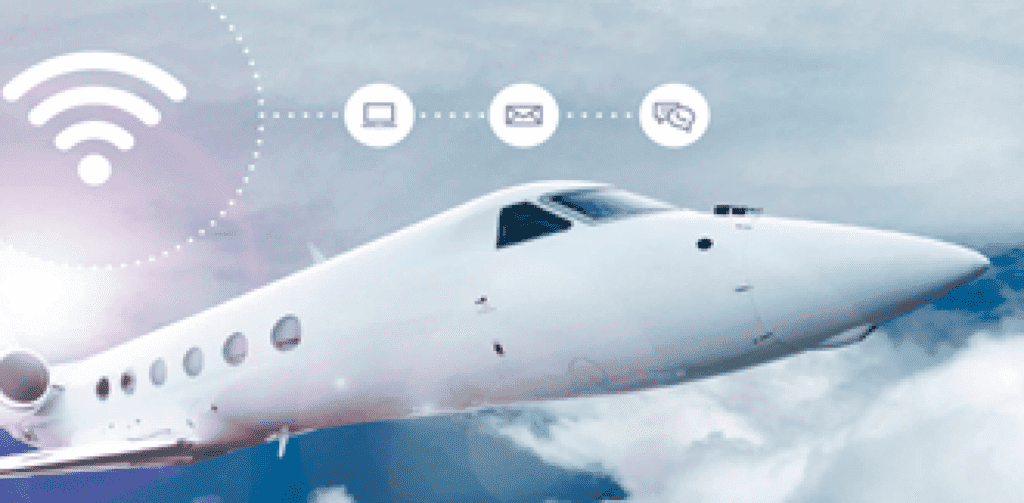It is quite a surprise that we are talking about 5G networks in planes considering all the stories we heard about 5G and airport towers. When 5G networks were first commercialized, there were several "conspiracy theories" that 5G networks will disrupt the free flow of communication in airports. However, it now appears that all that news is "water under the bridge". The European Union is now deciding whether to allow flights offer 5G services in the air. This network will be for streaming videos and audios, browsing the web and making calls.

If the bill pulls through, the EU will require airlines to offer 5G networks for users instead of paying for Wi-Fi. This also means that the mandatory shutdown of mobile phones or putting the phones in flight mode will come to an end. If the EU passes the bill, airlines will have six months (until June 30, 2023) to prepare such 5G networks. The EU wants top and current services to be available for people. EU Markets Commissioner Thierry Breton says flying should no longer be a limit for network users.
The airlies will use a special network equipment called "pico-cells" to connect aircraft to the ground. With this tech, it will transmit calls, texts and Internet data through the ground's satellite network.
Ban of mobile phones in airplanes dates back to 1991
According to the US Federal Communications Commission (FCC), the ban on the use of mobile phones in airplanes dates back to 1991. The FCC made this statement back in 2013. At the time, the commission claims that the ban on the use of mobile phones in airplanes is to avoid harmful interference to terrestrial cellular networks. In addition, the use of mobile phones may also interfere with the pilots' navigation systems.

Thus, there are two major reasons for the ban of mobile phones in airlines. First, to avoid congestion with ground networks and second to avoid interference with the pilots navigation system.
In simple terms, if all airlines allow users to use cell phones at 40,000 feet, multiple towers on the ground will pick up signals from a large number of active cell phones in a short period of time. This may cause ground network congestion, and disrupt communication services.
EU and UK worry less about the effect of mobile phones on aircraft
Day Whittingham, chief executive of the UK's Flight Safety Council, told the BBC that the use of mobile phones on planes has historically been banned. He claims that the ban is due to the fact that people didn't know what impact they would have on planes.

“We were concerned that it might interfere with the automatic flight control system,” Whittingham said. “From experience, we found that the risk of interference is very small. But we always recommend that users turn off the device or put it in airplane mode during the flight".
"There's much less potential for interference, we have a different set of 5G frequencies, and we have a lower power setting than the US standard. Users who are travelling want 5G, and regulators have to make that possible, but steps need to be taken to ensure that everything they do is safe."
That said, while the US has long had concerns about 5G interference, Whittingham said the UK and the EU have no such concerns.
Will 5G interfere with aeroplanes?
Back in 2019 and 2020, there were reports that 5G signals at some airports affect aircraft radio altimeters. However, Chen Xiangyang, deputy director of the Air Traffic Management Office of the Civil Aviation Administration of China says that 5G signals are different. He claims that "aviation 5G" will not have a similar effect.
Ever heard of 5G AeroMACS? This is a new generation aviation broadband communication technology. It applies 5G to AeroMACS civil aviation private network. The 5G network has some special qualities such as low latency, high reliability, and large bandwidth. 5G AeroMACS uses these qualities to ensure that aircraft cockpits, towers, ground vehicles, airlines, and airport operation control departments can accurately, timely, and quickly communicate with each other via a private aviation 5G network.
5G AeroMACS is applied within the scope of civil airports and on civil aviation-specific networks. While it meets the global standard for communication in the air, it will improve the safety and efficiency of airport operations. The application will not affect the safe operation of civil aviation.

China proposes to actively promote the use of 5G aviation broadband and build a civil aviation 5G that combines public and private use. It has set in motion the plan to build a standard civil aviation communication infrastructure system. By the end of 2025, it proposes the full use of 5G AeroMACS tech.
5G AeroMACS still has a lot of work to complete
There is a need to work out rules, standard systems, and working pattern of aviation 5G. There should also be standards and specifications for 5G AeroMACS as it relates to ground networks and other relevant devices. Furthermore, there is a need for system equipment that will consider how 5G AeroMACS works. In addition, there are several approvals and certifications that 5G AeroMACS will need. There will be aviation industry testing, pilot network test, frequency use license, ground base station license, airworthiness certification and other approvals for the system.
Relevant authorities in different regions will ensure that the operation is safe. They will also ensure that the system manages resources and there will be appropriate demonstration to boost the safety levels. All these will be ready between 2022 and 2025. All objectives for the system will be in phases. When these are ready, then the active promotion of 5G AeroMACS can commence.






Place comments
0 Comments
You are currently seeing only the comments you are notified about, if you want to see all comments from this post, click the button below.
Show all comments